The next frontier towards Digital Sarawak
13 October 2020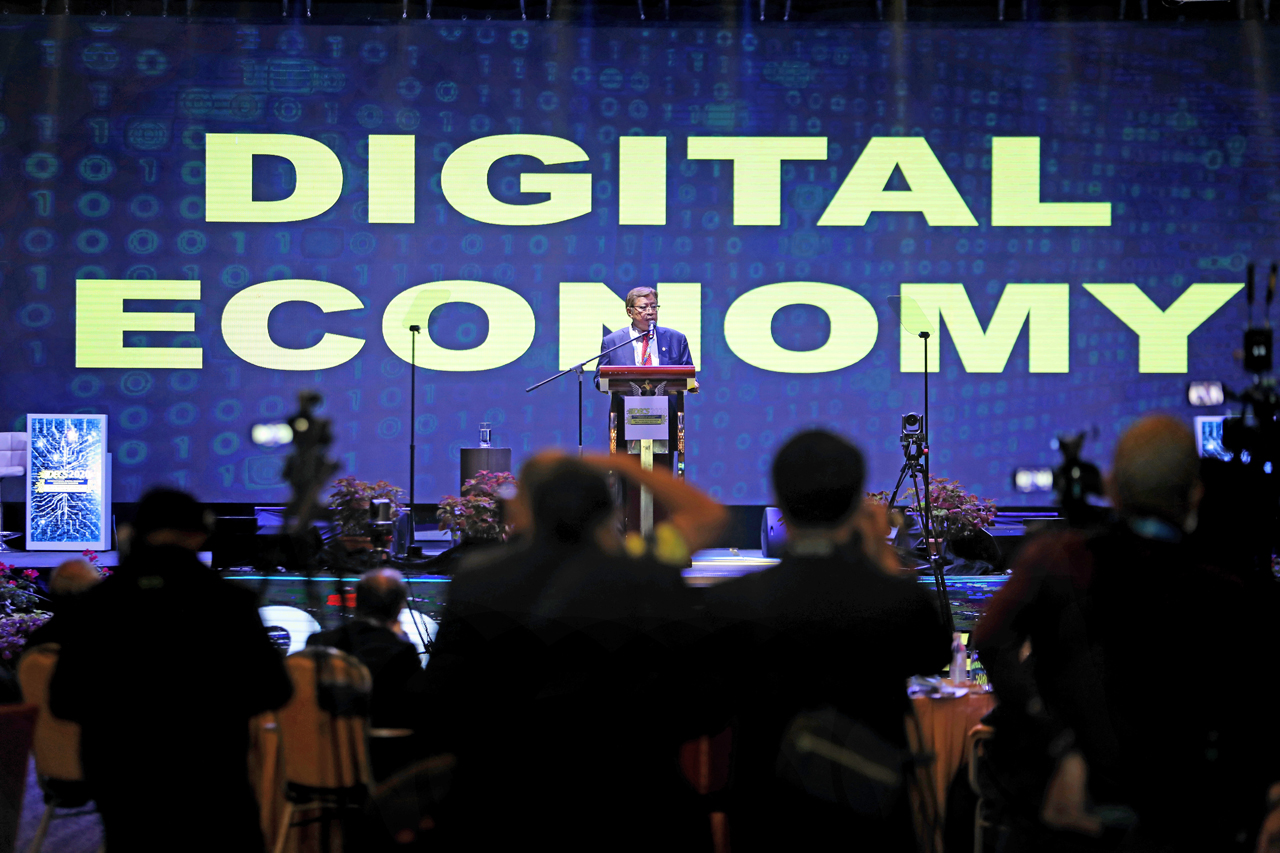
As Covid-19 spreads globally, access to the outside world has shrunk, observable now only through a distance online.
Our digital lives have expanded to fill the void, both professionally and personally, taking up a large chunk of how we see and operate the world today.
With Covid-19 changing up how economies and financial systems operate in the future, Sarawak needs to enhance its digital offerings to remain competitive.
This was the main gist put forward by Chief Minister Datuk Patinggi Abang Johari Tun Openg at the International Digital Economy Conference Sarawak (IDECS) 2020 held this week.
This year’s theme was ‘Data and Innovation in Accelerating Social and Economic Prosperity’, anchored on three pillars namely; economic prosperity, inclusive society, and environmental sustainability.
“Today we face one of the significant global challenges of our generation. Covid-19 pandemic has, without a doubt having severe economic and social impacts affecting our social interactions and people’s livelihood,” he said in his opening address.
“However, we are fortunate that we had embarked on a digital transformation journey in 2017 as part of our Digital Economy Strategy and thankfully are able to manage the devastating impact of Covid-19 in our daily lives and interactions.”
That said, he acknowledged that Covid-19 will have permanent, long-term effects on how economies and financial systems operate in the future.
“We are no longer able to do ‘business as usual’.
“Advancing into the future, Sarawak needs to enhance its productivity to remain competitive and at the same time, create a clean, healthy and resilient environment that will last for generations.”
To recap, Abang Johari established the Sarawak Economic Action Council (SEAC) on May 6, 2020, to formulate the state government’s Post Covid-19 Exit Economic Strategy 2030.
“Let me share with you my vision for Sarawak, namely ‘By 2030, Sarawak will be a developed state with a thriving economy driven by data and innovation where everyone enjoys economic prosperity, social inclusivity and a sustainable environment’.
“In arriving at Sarawak’s vision, it is not only about economic growth, but it is also about cascading the wealth and prosperity equitably and sustainably to all the people of Sarawak.”
On economic prosperity, Abang Johari highlighted that in order to achieve a high income and advanced state by 2030, Sarawak will need to achieve an economic growth rate of eight per cent annually to double the size of our economy from RM133 billion in 2018 to RM282 billion by 2030.
According to Abang Johari, Sarawak’s 14 sectors have been grouped into eight economic and six enabler sectors and are considered from multi-faceted angles to identify catalytic initiatives that will drive the sectors to have a high economic, social and environmental impact.
The following eight economic sectors will be the primary growth engines. These are commercial agriculture and commodities, concentrating on smart or precision farming; manufacturing – transforming to Industry 4.0; forestry with a focus on reforestation; tourism with efforts to increase visitor economy; mining and its exploration towards a downstream value chain; renewable energy and the potentials of hydrogen, biomass and solar energy; and services on access to affordable and quality of services.
“These economic sectors are in turn driven by the six enabler sectors, namely digital transformation, innovation and entrepreneurship, education, infrastructure, transport and utilities.”
Abang Johari also highlighted that the Post Covid-19 Economic Growth will be driven by data and innovation and as such Digital Economy is the key to achieving the state’s 2030 Economic Agenda.
“In 2017, I initiated the Sarawak’s Digital Economy soon after taking over as the Chief Minister of Sarawak. Sarawak Digital Economy Strategy (2018-2022) was launched in December 2017.
“The strategy saw the progress in digitalising our economy and was also put under test and has successfully addressed most of the issues raised by Covid-19 pandemic.
“As always, with any strategy, certain aspects such as digital sovereignty, interoperability, ease of doing business, cybersecurity, digital readiness and supporting digital transformation of the private sector could be further strengthened to accelerate our post Covid-19 Economic Agenda.”
During a panel discussion on the Sarawak Digital Economic Strategy 2030 at IDECS 2020, Sarawak Digital Economy Corporation (SDEC) and Centre of Technical Excellence (Centexs) chairman Tan Sri Datuk Amar Mohd Morshidi Abdul Ghani focused on three areas which the state government is currently putting emphasis on.
Digital infrastructure and connectivity
Earlier on, Abang Johari had announced that as part of the Digital Economy strategy, the State Government will be rolling out SMA300 telecommunication tower initiative.
“Today, I am pleased to report that 184 of these towers have been completed and the remaining 116 are expected for completion by the third quarter of 2021.”
He revealed that the rollout of the additional Phase 2 SMA300 towers, is still in the planning stage.
“However, upon completion, the 600 towers will complement the existing National Fiberization and Connectivity Plan (Jendela) initiatives by the federal government, that include 636 new towers,” he added on.
“Thus, this strategic partnership will realise the state’s vision of achieving 99.9 per cent broadband coverage through-out Sarawak.”
To accelerate internet connectivity to underserved rural communities, the state government has established free Wi-Fi connectivity for number of villages or longhouses.
“Through this initiative each village will share a bandwidth of 30mbps. To date, 20 villages or longhouses have been digitally connected to access internet, government services as well as Sarawak Pay.”
Abang Johari also reiterated that last month, he had announced and allocated additional RM50 million for the installation of mini satellite stations (VSAT) to furtherimprove connectivity in underserved rural areas.
“I believe that installing VSAT stations is the best way to solve the problem of poor internet connectivity in rural areas quickly.”
In addressing the challenges of providing high-speed connectivity, particularly in Sarawak, Malaysian Communications and Multimedia Commission (MCMC) Digital Services and Standards Sector chief operating officer Datuk Mohd Ali Hanafiah Mohd Yunus explained during the panel session that whenever they embark on an initiative or a journey, there will always be challenges along the way.
“That was why before we started anything, we commenced the National Digital Infrastructure Lab (NDIL), which was actually participated by various stakeholders such as telcos, government departments, agencies and SMA was also involved as well,” Hanafiah said.
“The lab went on for about one month. The lab discussed the aspirations, the short term, the medium term and also targets and what are the obstacles or the hurdles that will be coming up.
“Apart from that, there are also learnings that we got from the Covid-19 pandemic that we can’t just push it aside. We saw internet traffic increase by 30 to 70 per cent and then we saw internet usage moving up into the residential areas by about 50 to 70 per cent.
“Internet speed however has reduced or slowed down due to this by about 30 to 40 per cent. And complaints on internet speed on new coverage areas and also indoor coverage have increased by about 40 to 70 per cent.”
Hanafiah explained that all this needed to be considered in the Jendela planning.
The outcome was that Jendela was approached, through a phase approach, as MCMC had targets to be completed by end of this year 2020 and there were targets to be completed by 2022, which was categorised as mid-term. MCMC also has targets that go beyond this, to be completed on a long term basis, within the 12th Malaysia Plan (RMK12) period.
“From this year, we did a stock take. We have already connected about 4.9 million fibre premise pass and we want to increase this further. The planning is that with Jendela, by year 2022, we should be achieving about 7.5 million premise pass by then, in terms of 4G coverage.
“Today, we are at 91.8 per cent populated coverage and we are targeting this to grow until 96.9 per cent by 2022. In terms of mobile speed, we are experiencing about 25mbps today and by 2022, we are targeting this to be increased up to 35mbps.
“The aspirations is actually to enhance the rakyat’s experience on seamless connectivity at the urban, suburban and also rural areas.
“Also, to maximise 4g infrastrucutre and tehcnology, expanding its coverage and speed nationwide. And that quality of experince is incorporated as part of the quality measurements.”
“What does it mean for Sarawak? Jendela will bring additional 43,000 premises to be equipped with access to fibre, approximately 700 new towers to be built and upgrading of about 2,000 existing base stations to be able to provide 4g coverage on a commercial basis.
“Apart from that, there will be 600 additional new towers to be built, 1,000 existing base stations to be upgraded and copper migration for 21,000 subscribers, all under our universal service provisioning initiative.
“We will definitely be working together closely with the Sarawak state government and one relevant agency that we are always working closely would be the SMA.”
MCMC has identified areas to be covered with SMA, while there have also been discussions on any hurdles and the best technology to be used.
“There are areas within the urban and suburban areas that can be finalised instantaneously but obviously when we go further into the rural and remote areas, there are other technologies that we should be considering as well such as VSAT and satellite technologies.
“In terms of supporting the digital economy, we always have the access in terms of personal access and on the other hand, we also have the ‘collective access’.
“Through collective access, this is where we have our internet centres or pusat internet communities that we have in place for the communities to come and utilise the infrastructure that we already have.
“All of these internet centres are equipped with at least a bandwidth of 20mbps. They will have teachings on ICT and also online entrepreneurship. As it is today, we have already established 129 of these pusat internet communities for Sarawak.”
Digital inclusivity
Under digital inclusivity, the Chief Minister revealed that Digital Community Centres (DCCs) are being developed throughout the State to provide digital skills training and capacity building programmes.
This is to ensure that all Sarawakians will benefit from the digital economy.
“These digital inclusivity initiatives will help in developing local socio-economic sector by empowering the community to benefit from the state’s digital transformation,” he explained.
“It is hoped that these efforts will create a sustainable and resilient community that is technologically savvy while maintaining their respective values and identity.”
He revealed that the DCCs are properly planned to provide positive impacts on people’s overall quality of life.
“I hope that this initiative will be supported by all parties and over time the respective community would be able to thrive into a truly ‘Digital Community’ as implied in the name of this project.”
Meanwhile, Morshidi said of digital inclusivity and readiness, that awareness programs have been undertaken while adaptation by community and so forth, are all well and good.
“I think more effort should be put into that. The key thing on how people can uptake and adapt to the new technology is to use user experience,” Morshidi said during the panel session.
“Sarawak Pay, for example, is a good fintech platform which is used to reach every single merchant and user in the state. The push for Sarawak Pay is one way of trying to reach as many people as possible. Sarawak ID is another one.”
Morshidi added that the agropark will be a good user case for farmers to see how technology can be used, and as well as smart city and smart homes, these are all user case that can be used to reach and to get people to really accept and adopt digital technology.
Digital talents
In addressing the current state of human capital for the digital economy, the Chief Minister observed that when it comes to translating technological innovations into a real business, technology is relatively easy to come by but it is the talent that is often the limiting factor.
He opined that there is a significant skills gap between businesses current capabilities and skills needed to achieve its goals and meet customer demand.
“Advancements in technology such as artificial intelligence (AI), blockchain, Industry 4.0, nanotechnology, virtual or augmented reality, robotics, cybersecurity and other emerging technologies are revolutionising the nature of work, the dynamics of the workforce – and the skillsets needed.
“For example, while AI creates new opportunities, the jobs will necessitate a separate set of skills.”
Abang Johari gathered that as new roles arise and job requirements fluctuate, the scope of the existing talent in skilled workers may not cope with the changing demand.
“It is very challenging for industries to future-proof their personnel just by simply hiring new employees. What is necessary is a holistic approach and initiatives that will equip the current workforce with necessary skills. Such initiatives would require shared responsibility between corporations, governments and education providers.
“We also need to ensure that technological advances do not result in economic imbalance as lower-skilled employees become unemployed.”
He said that in addition to digital skills, there is a strong demand for soft skills such as project management, decision making, critical thinking, communication, design thinking and negotiating which will empower people to equip with the competencies of the digital revolution.
“To address these challenges, we need to invest more in reskilling and upskilling of our workforce.”
On the topic of digital talents, Morshidi pointed out that underlying the application of digital technology is the talent.
“If we go into data, innovation and so forth, talent will encompass a lot of professions such as data analysts, data scientists, programmers, and even ethical hackers and so forth. This profession is not easy to come by and will be a challenge for us. Probably even in the next five years, we will not be able to produce this level of people.
“But for me, maybe the effort by the government like science, technology, engineering and mathematics (STEM) education, private schools which are largely science schools, digital academy at Centexs where we are improving the skills of the people in every aspect of it, and of course to bring back our talent from overseas, these are good initiatives but I think that will take a bit of time.”
As such, Morshidi has proposed to welcome more digital nomads into Sarawak to make up for the lack of digital talent available here.
“Maybe we can open a little bit our doors as an interim measure to people like digital nomads. Digital nomads are basically people who are location independent entrepreneurs and location independent programmers. These people are actually already here in some places in Sarawak.
“They are independent, they will go to every part of the world, they travel everywhere in the world and hibernate in each place where they stay and they will use their programming skills to help industries.
“It could be a way where we can provide a kind of extended visa for them to stay, six months or maybe a year, so they can be used as an interim measure to fill the gap of our talent.”
Digital government
Other initiatives highlighted by Morshidi include digitalising government services and adopting the e-Residency concept, which can help increase the uptake of technology in the private sector.
The target under the aspiration of the Sarawak Economic Development Agenda is to achieve 100 per cent digital government services, which Morshidi believes is a very good initiative.
“With that kind of target, we will be able to be a global player. Estonia’s government services is already 99 per cent digitalised. This is where Sains will play a major role to help to digitalise alot of government services.
“Because investors, private sectors, they need efficient and fast service so digitalising government services is the only way out.”
He noted that the challenge is making both federal and state government services interoperable and integrated for a more seamless experience.
“I’m giving the example of a trading license, if a small and medium enterprise (SME) or entrepreneur wants to apply for a trading license, they have to go through the federal government department agencies and also state government agencies.
“First, they will have to get the police permission (federal). Secondly, they will have to go to Dewan Bahasa to get their names approved.
Third is the medical department, fourth is the council and finally they will need to get the license from Inland Revenue. As such, there’s five government agencies just to apply for a trading license.
“If we can digitalise that process, you can integrate all the government agencies, both federal and state, we will probably be able to get the license in one day.
“Most of the time, when you want to apply for this license, it takes you three months. This is just an example of what I mean by digitalising government services.”
e-Residency
According to Morshidi, there are 40,000 SMEs in Sarawak and they are targeting at least 50 per cent of these SMEs to actually use digital technology in their business, in their efficiency of their projects or business, as well as to increase their productivity.
“Part of the option we could look into is, as with Estonia, they have this concept called e-Residency. Using e-Residency, they have brought in, or registered, 6,000 new entrepreneurs offshore but operating in Estonia. Alot of countries are adopting that now.
“What they basically do is, you operate your business virtually, you are not in Estonia, you are in other countries, but the business is in Estonia. You are governed by the rules and regulations of companies in Estonia and at the same time, you are also subject to the tax of Estonia.
Morshidi believed that this is one area which could be a way to increase or catapult Sarawak’s economic growth.
“Because to me, (out of the target economic growth rate of) eight per cent, maybe four per cent (will come) from government, the other four per cent has to come from private sector.
“I’d like to say that SDEC is now studying this concept and we will come back with details on how it can be operationalised and get the government to consider it.”

Source: BorneoPost
Our digital lives have expanded to fill the void, both professionally and personally, taking up a large chunk of how we see and operate the world today.
With Covid-19 changing up how economies and financial systems operate in the future, Sarawak needs to enhance its digital offerings to remain competitive.
This was the main gist put forward by Chief Minister Datuk Patinggi Abang Johari Tun Openg at the International Digital Economy Conference Sarawak (IDECS) 2020 held this week.
This year’s theme was ‘Data and Innovation in Accelerating Social and Economic Prosperity’, anchored on three pillars namely; economic prosperity, inclusive society, and environmental sustainability.
“Today we face one of the significant global challenges of our generation. Covid-19 pandemic has, without a doubt having severe economic and social impacts affecting our social interactions and people’s livelihood,” he said in his opening address.
“However, we are fortunate that we had embarked on a digital transformation journey in 2017 as part of our Digital Economy Strategy and thankfully are able to manage the devastating impact of Covid-19 in our daily lives and interactions.”
That said, he acknowledged that Covid-19 will have permanent, long-term effects on how economies and financial systems operate in the future.
“We are no longer able to do ‘business as usual’.
“Advancing into the future, Sarawak needs to enhance its productivity to remain competitive and at the same time, create a clean, healthy and resilient environment that will last for generations.”
To recap, Abang Johari established the Sarawak Economic Action Council (SEAC) on May 6, 2020, to formulate the state government’s Post Covid-19 Exit Economic Strategy 2030.
“Let me share with you my vision for Sarawak, namely ‘By 2030, Sarawak will be a developed state with a thriving economy driven by data and innovation where everyone enjoys economic prosperity, social inclusivity and a sustainable environment’.
“In arriving at Sarawak’s vision, it is not only about economic growth, but it is also about cascading the wealth and prosperity equitably and sustainably to all the people of Sarawak.”
On economic prosperity, Abang Johari highlighted that in order to achieve a high income and advanced state by 2030, Sarawak will need to achieve an economic growth rate of eight per cent annually to double the size of our economy from RM133 billion in 2018 to RM282 billion by 2030.
According to Abang Johari, Sarawak’s 14 sectors have been grouped into eight economic and six enabler sectors and are considered from multi-faceted angles to identify catalytic initiatives that will drive the sectors to have a high economic, social and environmental impact.
The following eight economic sectors will be the primary growth engines. These are commercial agriculture and commodities, concentrating on smart or precision farming; manufacturing – transforming to Industry 4.0; forestry with a focus on reforestation; tourism with efforts to increase visitor economy; mining and its exploration towards a downstream value chain; renewable energy and the potentials of hydrogen, biomass and solar energy; and services on access to affordable and quality of services.
“These economic sectors are in turn driven by the six enabler sectors, namely digital transformation, innovation and entrepreneurship, education, infrastructure, transport and utilities.”
Abang Johari also highlighted that the Post Covid-19 Economic Growth will be driven by data and innovation and as such Digital Economy is the key to achieving the state’s 2030 Economic Agenda.
“In 2017, I initiated the Sarawak’s Digital Economy soon after taking over as the Chief Minister of Sarawak. Sarawak Digital Economy Strategy (2018-2022) was launched in December 2017.
“The strategy saw the progress in digitalising our economy and was also put under test and has successfully addressed most of the issues raised by Covid-19 pandemic.
“As always, with any strategy, certain aspects such as digital sovereignty, interoperability, ease of doing business, cybersecurity, digital readiness and supporting digital transformation of the private sector could be further strengthened to accelerate our post Covid-19 Economic Agenda.”
During a panel discussion on the Sarawak Digital Economic Strategy 2030 at IDECS 2020, Sarawak Digital Economy Corporation (SDEC) and Centre of Technical Excellence (Centexs) chairman Tan Sri Datuk Amar Mohd Morshidi Abdul Ghani focused on three areas which the state government is currently putting emphasis on.
Digital infrastructure and connectivity
Earlier on, Abang Johari had announced that as part of the Digital Economy strategy, the State Government will be rolling out SMA300 telecommunication tower initiative.
“Today, I am pleased to report that 184 of these towers have been completed and the remaining 116 are expected for completion by the third quarter of 2021.”
He revealed that the rollout of the additional Phase 2 SMA300 towers, is still in the planning stage.
“However, upon completion, the 600 towers will complement the existing National Fiberization and Connectivity Plan (Jendela) initiatives by the federal government, that include 636 new towers,” he added on.
“Thus, this strategic partnership will realise the state’s vision of achieving 99.9 per cent broadband coverage through-out Sarawak.”
To accelerate internet connectivity to underserved rural communities, the state government has established free Wi-Fi connectivity for number of villages or longhouses.
“Through this initiative each village will share a bandwidth of 30mbps. To date, 20 villages or longhouses have been digitally connected to access internet, government services as well as Sarawak Pay.”
Abang Johari also reiterated that last month, he had announced and allocated additional RM50 million for the installation of mini satellite stations (VSAT) to furtherimprove connectivity in underserved rural areas.
“I believe that installing VSAT stations is the best way to solve the problem of poor internet connectivity in rural areas quickly.”
In addressing the challenges of providing high-speed connectivity, particularly in Sarawak, Malaysian Communications and Multimedia Commission (MCMC) Digital Services and Standards Sector chief operating officer Datuk Mohd Ali Hanafiah Mohd Yunus explained during the panel session that whenever they embark on an initiative or a journey, there will always be challenges along the way.
“That was why before we started anything, we commenced the National Digital Infrastructure Lab (NDIL), which was actually participated by various stakeholders such as telcos, government departments, agencies and SMA was also involved as well,” Hanafiah said.
“The lab went on for about one month. The lab discussed the aspirations, the short term, the medium term and also targets and what are the obstacles or the hurdles that will be coming up.
“Apart from that, there are also learnings that we got from the Covid-19 pandemic that we can’t just push it aside. We saw internet traffic increase by 30 to 70 per cent and then we saw internet usage moving up into the residential areas by about 50 to 70 per cent.
“Internet speed however has reduced or slowed down due to this by about 30 to 40 per cent. And complaints on internet speed on new coverage areas and also indoor coverage have increased by about 40 to 70 per cent.”
Hanafiah explained that all this needed to be considered in the Jendela planning.
The outcome was that Jendela was approached, through a phase approach, as MCMC had targets to be completed by end of this year 2020 and there were targets to be completed by 2022, which was categorised as mid-term. MCMC also has targets that go beyond this, to be completed on a long term basis, within the 12th Malaysia Plan (RMK12) period.
“From this year, we did a stock take. We have already connected about 4.9 million fibre premise pass and we want to increase this further. The planning is that with Jendela, by year 2022, we should be achieving about 7.5 million premise pass by then, in terms of 4G coverage.
“Today, we are at 91.8 per cent populated coverage and we are targeting this to grow until 96.9 per cent by 2022. In terms of mobile speed, we are experiencing about 25mbps today and by 2022, we are targeting this to be increased up to 35mbps.
“The aspirations is actually to enhance the rakyat’s experience on seamless connectivity at the urban, suburban and also rural areas.
“Also, to maximise 4g infrastrucutre and tehcnology, expanding its coverage and speed nationwide. And that quality of experince is incorporated as part of the quality measurements.”
“What does it mean for Sarawak? Jendela will bring additional 43,000 premises to be equipped with access to fibre, approximately 700 new towers to be built and upgrading of about 2,000 existing base stations to be able to provide 4g coverage on a commercial basis.
“Apart from that, there will be 600 additional new towers to be built, 1,000 existing base stations to be upgraded and copper migration for 21,000 subscribers, all under our universal service provisioning initiative.
“We will definitely be working together closely with the Sarawak state government and one relevant agency that we are always working closely would be the SMA.”
MCMC has identified areas to be covered with SMA, while there have also been discussions on any hurdles and the best technology to be used.
“There are areas within the urban and suburban areas that can be finalised instantaneously but obviously when we go further into the rural and remote areas, there are other technologies that we should be considering as well such as VSAT and satellite technologies.
“In terms of supporting the digital economy, we always have the access in terms of personal access and on the other hand, we also have the ‘collective access’.
“Through collective access, this is where we have our internet centres or pusat internet communities that we have in place for the communities to come and utilise the infrastructure that we already have.
“All of these internet centres are equipped with at least a bandwidth of 20mbps. They will have teachings on ICT and also online entrepreneurship. As it is today, we have already established 129 of these pusat internet communities for Sarawak.”
Digital inclusivity
Under digital inclusivity, the Chief Minister revealed that Digital Community Centres (DCCs) are being developed throughout the State to provide digital skills training and capacity building programmes.
This is to ensure that all Sarawakians will benefit from the digital economy.
“These digital inclusivity initiatives will help in developing local socio-economic sector by empowering the community to benefit from the state’s digital transformation,” he explained.
“It is hoped that these efforts will create a sustainable and resilient community that is technologically savvy while maintaining their respective values and identity.”
He revealed that the DCCs are properly planned to provide positive impacts on people’s overall quality of life.
“I hope that this initiative will be supported by all parties and over time the respective community would be able to thrive into a truly ‘Digital Community’ as implied in the name of this project.”
Meanwhile, Morshidi said of digital inclusivity and readiness, that awareness programs have been undertaken while adaptation by community and so forth, are all well and good.
“I think more effort should be put into that. The key thing on how people can uptake and adapt to the new technology is to use user experience,” Morshidi said during the panel session.
“Sarawak Pay, for example, is a good fintech platform which is used to reach every single merchant and user in the state. The push for Sarawak Pay is one way of trying to reach as many people as possible. Sarawak ID is another one.”
Morshidi added that the agropark will be a good user case for farmers to see how technology can be used, and as well as smart city and smart homes, these are all user case that can be used to reach and to get people to really accept and adopt digital technology.
Digital talents
In addressing the current state of human capital for the digital economy, the Chief Minister observed that when it comes to translating technological innovations into a real business, technology is relatively easy to come by but it is the talent that is often the limiting factor.
He opined that there is a significant skills gap between businesses current capabilities and skills needed to achieve its goals and meet customer demand.
“Advancements in technology such as artificial intelligence (AI), blockchain, Industry 4.0, nanotechnology, virtual or augmented reality, robotics, cybersecurity and other emerging technologies are revolutionising the nature of work, the dynamics of the workforce – and the skillsets needed.
“For example, while AI creates new opportunities, the jobs will necessitate a separate set of skills.”
Abang Johari gathered that as new roles arise and job requirements fluctuate, the scope of the existing talent in skilled workers may not cope with the changing demand.
“It is very challenging for industries to future-proof their personnel just by simply hiring new employees. What is necessary is a holistic approach and initiatives that will equip the current workforce with necessary skills. Such initiatives would require shared responsibility between corporations, governments and education providers.
“We also need to ensure that technological advances do not result in economic imbalance as lower-skilled employees become unemployed.”
He said that in addition to digital skills, there is a strong demand for soft skills such as project management, decision making, critical thinking, communication, design thinking and negotiating which will empower people to equip with the competencies of the digital revolution.
“To address these challenges, we need to invest more in reskilling and upskilling of our workforce.”
On the topic of digital talents, Morshidi pointed out that underlying the application of digital technology is the talent.
“If we go into data, innovation and so forth, talent will encompass a lot of professions such as data analysts, data scientists, programmers, and even ethical hackers and so forth. This profession is not easy to come by and will be a challenge for us. Probably even in the next five years, we will not be able to produce this level of people.
“But for me, maybe the effort by the government like science, technology, engineering and mathematics (STEM) education, private schools which are largely science schools, digital academy at Centexs where we are improving the skills of the people in every aspect of it, and of course to bring back our talent from overseas, these are good initiatives but I think that will take a bit of time.”
As such, Morshidi has proposed to welcome more digital nomads into Sarawak to make up for the lack of digital talent available here.
“Maybe we can open a little bit our doors as an interim measure to people like digital nomads. Digital nomads are basically people who are location independent entrepreneurs and location independent programmers. These people are actually already here in some places in Sarawak.
“They are independent, they will go to every part of the world, they travel everywhere in the world and hibernate in each place where they stay and they will use their programming skills to help industries.
“It could be a way where we can provide a kind of extended visa for them to stay, six months or maybe a year, so they can be used as an interim measure to fill the gap of our talent.”
Digital government
Other initiatives highlighted by Morshidi include digitalising government services and adopting the e-Residency concept, which can help increase the uptake of technology in the private sector.
The target under the aspiration of the Sarawak Economic Development Agenda is to achieve 100 per cent digital government services, which Morshidi believes is a very good initiative.
“With that kind of target, we will be able to be a global player. Estonia’s government services is already 99 per cent digitalised. This is where Sains will play a major role to help to digitalise alot of government services.
“Because investors, private sectors, they need efficient and fast service so digitalising government services is the only way out.”
He noted that the challenge is making both federal and state government services interoperable and integrated for a more seamless experience.
“I’m giving the example of a trading license, if a small and medium enterprise (SME) or entrepreneur wants to apply for a trading license, they have to go through the federal government department agencies and also state government agencies.
“First, they will have to get the police permission (federal). Secondly, they will have to go to Dewan Bahasa to get their names approved.
Third is the medical department, fourth is the council and finally they will need to get the license from Inland Revenue. As such, there’s five government agencies just to apply for a trading license.
“If we can digitalise that process, you can integrate all the government agencies, both federal and state, we will probably be able to get the license in one day.
“Most of the time, when you want to apply for this license, it takes you three months. This is just an example of what I mean by digitalising government services.”
e-Residency
According to Morshidi, there are 40,000 SMEs in Sarawak and they are targeting at least 50 per cent of these SMEs to actually use digital technology in their business, in their efficiency of their projects or business, as well as to increase their productivity.
“Part of the option we could look into is, as with Estonia, they have this concept called e-Residency. Using e-Residency, they have brought in, or registered, 6,000 new entrepreneurs offshore but operating in Estonia. Alot of countries are adopting that now.
“What they basically do is, you operate your business virtually, you are not in Estonia, you are in other countries, but the business is in Estonia. You are governed by the rules and regulations of companies in Estonia and at the same time, you are also subject to the tax of Estonia.
Morshidi believed that this is one area which could be a way to increase or catapult Sarawak’s economic growth.
“Because to me, (out of the target economic growth rate of) eight per cent, maybe four per cent (will come) from government, the other four per cent has to come from private sector.
“I’d like to say that SDEC is now studying this concept and we will come back with details on how it can be operationalised and get the government to consider it.”

Source: BorneoPost

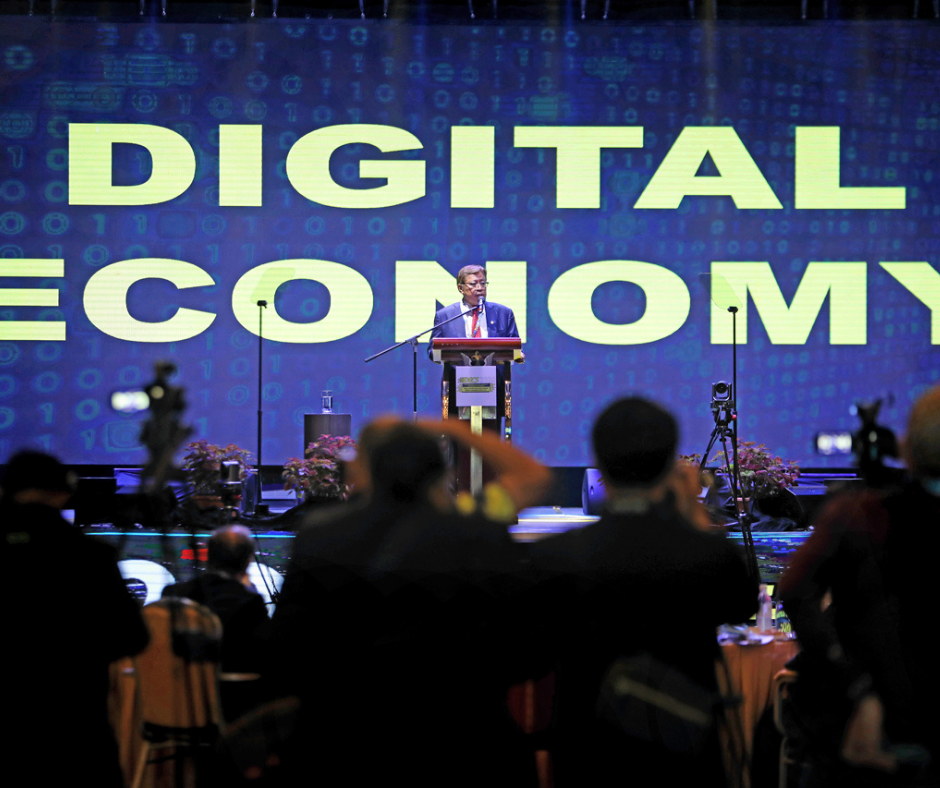



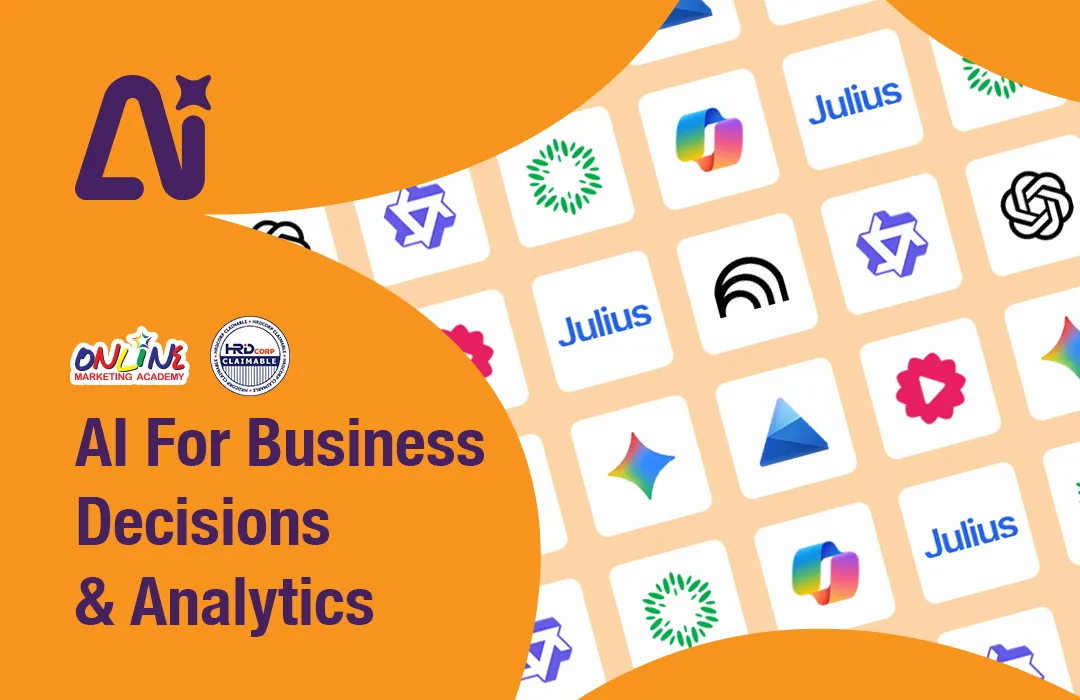



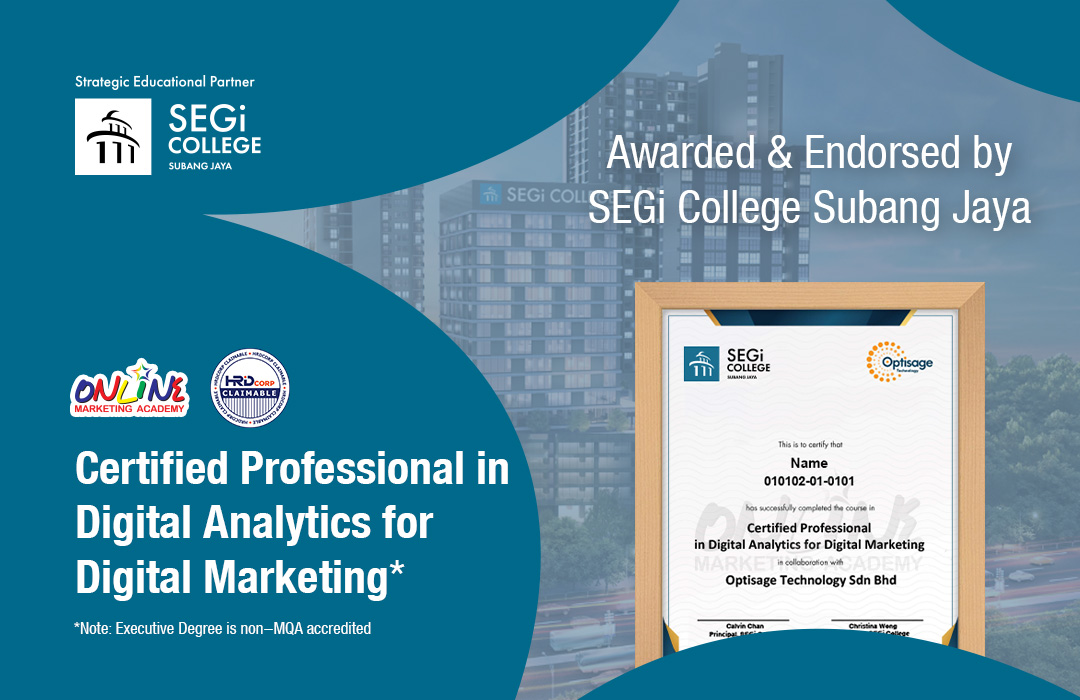
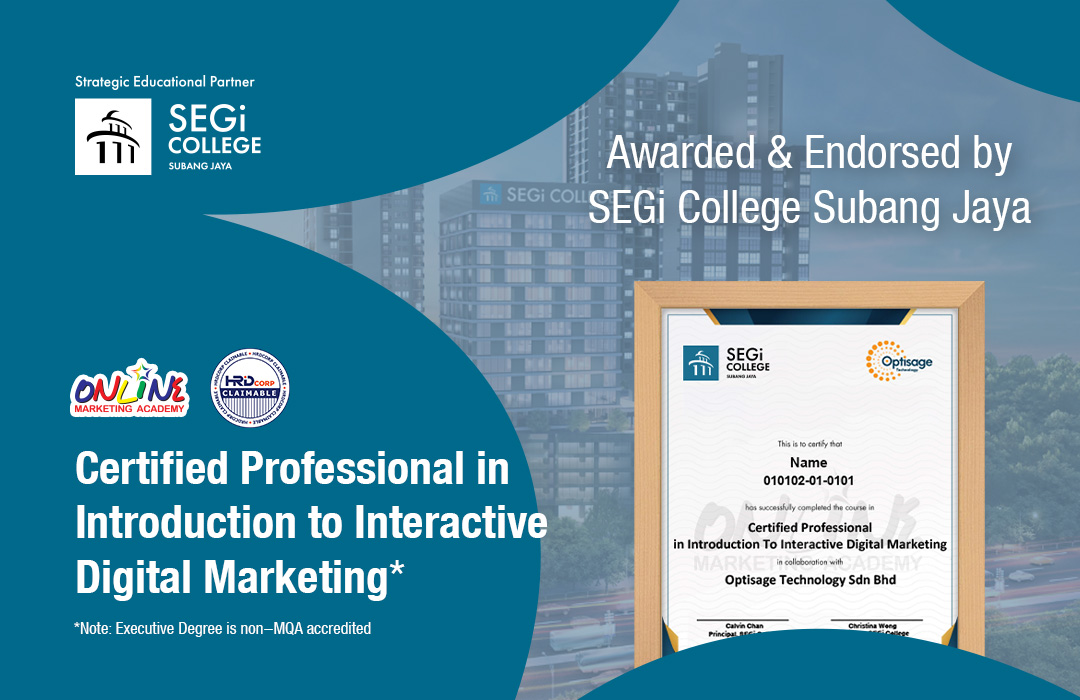
 Whatsapp Us +6011 1144 5462
Whatsapp Us +6011 1144 5462



